Published
on 8
Nov 2022
|
All rights reserved.
|
|
|
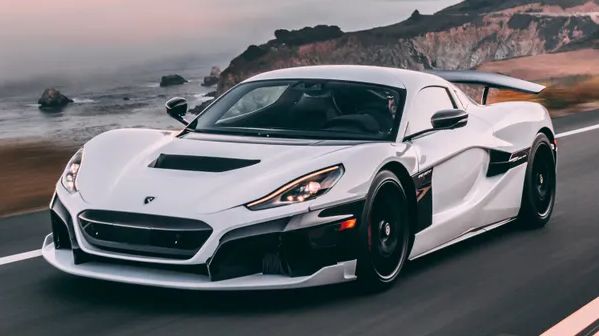
|
|
A
Croatian created the world's fastest hypercar, and it is not just about
speed...
|
|
It is never easy to crack
into the super sports car business. Established brands like Ferrari,
Lamborghini, Maserati, Aston Martin and Bugatti have tons of history
and enormous resources to back them up. Startups have to fight an
uphill battle, building brand awareness with innovative design and
engineering while taking care of quality, suppliers, type approval,
sales and aftersales network and most important, cash flow.
Unfortunately, rich people change their perception slowly, so these
ventures usually run out of money before seeing the light of success.
In the past 30 years, only a couple of entrepreneurs succeeded in
entering super sports car business. The first is Horacio Pagani, but he
was already a successful composite materials supplier before building
his first supercar. The second is Christian von Koenigsegg, a really
innovative guy who managed to build a small supercar industry from
scratch in Sweden. Mate Rimac might be the third. In many ways he is
very similar to Koenigsegg – innovative, motivative and has amazing
attention to details. Worse than Koenigsegg’s case, his home country
Croatia has neither automotive industry nor really high-tech companies,
but he is even more ambitious than the Swede, trying to build an
automotive tech empire there.
Rimac founded his company in 2009 when he was just 21 years old. 2
years earlier, he converted a BMW 3-Series E30 into electric and
enjoyed some successes in motor-racing. Having realized the potential
of electric cars, he founded his venture to develop and build
high-performance electric components, such as motors, batteries,
inverters and axles. Later on, he also expanded into composites and
autonomous driving technology. In 2011, he designed the first electric
supercar bearing his name called Concept One. With an output of 1088
horsepower, it caught the attention of the world – and even more
attention when it was famously crashed by Top Gear presenter Richard
Hammond and broke his leg. Luckily, 8 cars were sold before the
accident. The second concept, C_Two, was unveiled in 2018 with even
more spectacular numbers. It was eventually developed into the Nevera
and starts production this year. However, Mate Rimac does not devote
all his energy into the supercar. At the same time, he expanded his
performance electrical component business, supplying to hybrid
supercars like Aston Valkyrie and Koenigsegg Regera. His EV know-how
attracted the investment from Hyundai group and Porsche, eventually
leading to the absorption of Bugatti into the group. The fast expansion
will reach a new height next year when the new headquarters Rimac
Compus will be finished in Sveta Nedelja, by then up to 2500 employees
will work there. For comparison, Lamborghini employs only 1800 people
worldwide. While Nevera brings it to the front of car lovers, Rimac is
far more than supercar making.
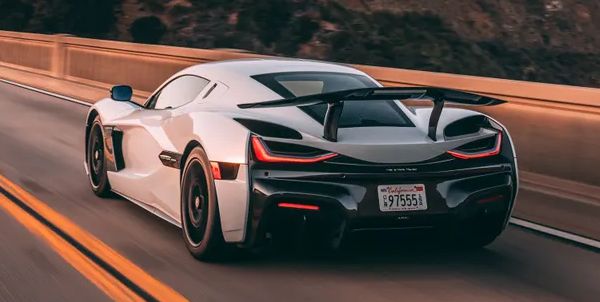
|
|
This
car beats Bugatti Chiron SS to 186 mph by almost 3 seconds...
|
|
Like
Pagani, Rimac likes to name his car after wind. Nevera is a violent
storm frequently seen in the Mediterranean outside Croatia. It may
reach up to 250 km/h, but the Croatian electric hypercar is much
faster, with a claimed (but yet to be tested) top speed of 412 km/h or
258 mph. It might be a bit slower than some Koenigseggs and Bugattis,
but only fools care about those silly stats, as you have no where to
experience its top speed, not even race tracks or airfields. What you
should care is acceleration. With a record-breaking 1914 horsepower
output and 1740 pound-foot of instantly available torque, as well as
4-wheel traction, the Nevera is pretty much peerless. It sprints from
rest to 60 mph in merely 1.85 seconds, passes the 100 mph mark at 4.3
seconds and hits 186 mph (300 km/h) in 9.3 seconds, the latter is
almost 3 seconds quicker than Bugatti Chiron Super Sport ! The Bugatti
is capable to do quarter mile run in 9.1 seconds at 161 mph, but the
Croatian car smashes it in 8.6 seconds at 168 mph. In the real world,
this is the fastest car ever built.
Making such astonishing performance possible are 4 electric motors, one
for each wheel. They are not in-wheel motors, but installed inboard and
drive each wheel via half shaft to keep unsprung weight low. Each motor
has its own inverter and step-down gearset (so-called “single-speed
gearbox”, but I always think this term silly). Each front motor is good
for 299 horsepower and 206 pound-foot of torque, while rear motor
produces 653 horsepower and 664 pound-foot. Don’t know why, these
numbers add up to only 1904 horsepower, 10 shy of the quoted total
output. Anyway, as Car and Driver pointed out, 1914 hp is only the
maximum output from battery. When it passes through cables and
inverters, 1838 hp is left for those motors for consumption. In
principle, we should have used 1838 hp as the power rating.
A crucial benefit of using 4 motors is torque vectoring. Basically, you
can send whatever torque you like to any wheels as long as within the
capacity of their motors. In a twin-motor or 3-motor setup, torque
vectoring can be achieved with conventional active LSD consisting of
differential and clutch packs, but that will cause delay in response,
and the mechanical actuation won’t be as smooth and as infinitely
variable as the 4-motor setup. On the downside, the 4-motor setup is
likely to be less energy efficient.
|
|
|
The
world's first electric hypercar to get type approval in major markets.
It is state of the art, of course.
|
|
That’s probably the case in the Nevera. Although its battery
is the largest among production EVs, with a capacity of 120 kWh, its
range is only 205 miles according to EPA test method (note: the 342
miles of WLTP range is uncertified yet, just estimation). The Nevera’s
drag coefficient is very good for a hypercar at 0.30, so the poor
energy efficiency is probably down to drivetrain losses.
The 700 kg worth of battery is arranged in T-shape, occupying the space
behind the seats, the backbone and the floor right under the occupants’
legs. This allows the seats to be mounted low, hence a low roof line,
something a must for a sports car. The battery module is a stressed
member of the chassis, contributing to a third of the total torsional
rigidity, which is an astonishing 70,000 degree/Nm, compared with
50,000 degree/Nm of Bugatti Chiron. The Nevera’s chassis is also state
of the art, a carbon-fiber monocoque completed with T-bar roof and rear
subframe. Only the front and rear crash structures are made of
aluminum. The body shell is also fully carbon-fiber. Weight
distribution is optimized to 48:52 front to rear.
The double-wishbone suspensions, mounted directly at the carbon
monocoque, have adaptive dampers and adjustable ride height. Brakes are
Brembo CCM-R, 390 mm ceramic disc and 6-piston caliper at each corner.
It is actuated by wire for the ease of blending mechanical braking and
regenerative braking, which is good for 300 kW, the highest achieved by
any EVs to date. The steering is also controlled by wire so that it is
compatible with autonomous driving technology.
The Nevera is about the same size as a LaFerrari, but its 2745 mm
wheelbase is longer than most hypercars, even though you won’t guess it
from the extra-long nose. It has a proper supercar profile, being
sleek, low and wide. The styling is not particularly artistic. Imagine
Mr. Gumpert Apollo gets married with Miss Audi R8, their son will look
like this. Anyway, the body work is efficient in aerodynamics, thanks
in part to a smooth underbody. There are 4 active aerodynamic devices –
a flap at the bonnet, a front underbody flap, active rear diffuser and
a rear wing – and they adjust according to speed and drive mode. In
Track mode, everything is raised to optimize downforce. Conversely,
when chasing top speed they keep flush with the body to reduce drag.
Rimac hasn’t revealed the amount of downforce it
can produce, so don’t expect the Nevera to rival Porsche 911 GT3 RS on
track.
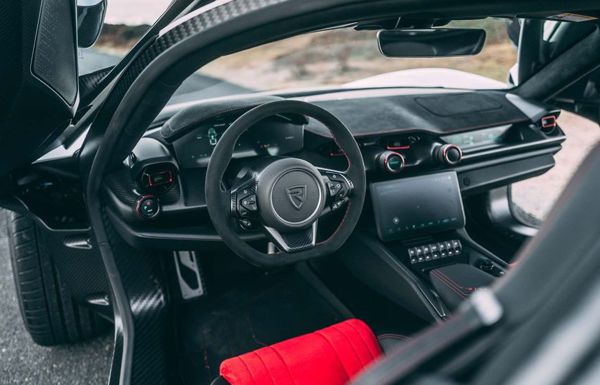
|
|
The
cabin is better finished than many British rivals...
|
|
In fact, as advanced the Nevera is, its battery tech is not
light enough to be used as a track car. Weighing 2150 kg, the car is a
lot heavier than conventional hypercars, especially when compared with
Gordon Murray’s 986 kg T.50. You might say it boasts higher
power-to-weight ratio, but track performance also calls for roadholding
and braking, both are seriously hampered by weight. Even if it may set
an impressive lap time in Nurburgring – considering a Tesla Model S
Plaid already did in 7:30.9, Rimac should cut at least 30 seconds – but
after half an hour circling a track, I am quite sure the electric
hypercar will be struggling with overheating, tire scrap and brake
fade, because it does not have superior tires and brakes to handle its
extra mass.
That is why it declines to follow the path of Koenigsegg or Huayra BC
or McLaren or LaFerrari or Gordon Murray or Aston Valkyrie or AMG One.
It is more a luxury hypercar like Bugatti. Open the butterfly doors,
you will see a nicely trimmed cabin that majors on technology rather
than lightweight – although plenty of bare carbon-fiber is visible from
the architecture. It has a proper touchscreen at the center console and
another digital display above the passenger glovebox. While it lacks
the impeccable materials and craftsmanship of true luxury brands, it
compensates with modern digital technology. This car is equipped with
an advanced driving assistance system developed together with NVIDIA,
which uses stereo cameras, radars, Lidars and ultrasonic sensors to
provide collision prediction, automatic emergency braking, lane-keep
assist and adaptive cruise control. Call it pointless to a driver’s
car, but Rimac uses this car as much as a showcase for its other
technologies.
On the Road
For a hypercar, the Nevera’s cabin is quite easy to get in and out. Its
butterfly door opens a large part of the roof so that you won’t hit
your head. The door also cuts a large part of the bodywork and reveals
a pretty narrow sill, easy to step across and drop into the bucket
seat. The seat, dash and doors can be trimmed in either leather or
Alcantara, while air vents and switchgears are made of billet aluminum.
The build quality is surprisingly good for a startup, even trumping
established rivals like McLaren and Lotus. The cabin could be tight for
taller drivers though, both head and legroom. Visibility is average,
but under the glass liftback there is a useful luggage space that won’t
cook your belongings.
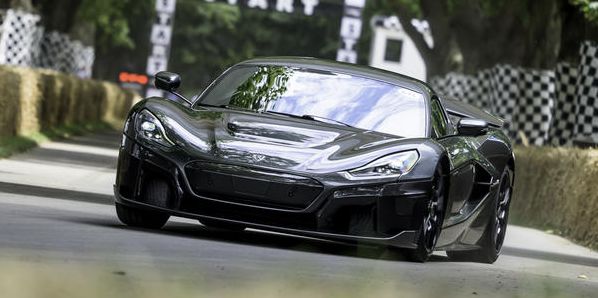
|
|
Ride
and handling up to the job despite the weight, but lacks emotion of
combustion rivals.
|
|
One
advantage of an electric hypercar is that it can be used as an everyday
car. Keep it in Comfort mode, its power is tamed. Suspension is
comfortable enough to live with country roads, if not as supple as most
Ferraris and McLarens. Moreover, you can drive with one pedal, as the
regenerative braking is strong enough to stop the car without touching
the brake pedal. Noise insulation is not perfect though, especially as
stones keep hitting the carbon-fiber bottom, and there are some creaks
from interior bits occasionally, but that is forgivable for a
low-volume manufacturer like Rimac.
Turn to Sport mode, a press on the throttle pedal results in an instant
rocket launch. The punch is simply incredible, and the sudden
acceleration is breathtaking, yet the expected wheelspin did not
happen, because the Nevera’s brain manages power to each wheel cleverly
to match traction available from the Michelin Pilot Sport 4S rubbers.
Its roadholding is equally strong, while body control is as tight as
you would expect for a mid-engined supercar. The ride quality, however,
suffers noticeably in Sport and becomes barely tolerable on public
roads in Track mode. As good as the engineering team of Rimac, they
still lack the suspension tuning know-how of legacy manufacturers,
especially when their car has more weight to handle. Likewise, the
by-wire steering is accurate and well weighted but lacks communication.
The brake pedal is a bit too sensitive at the top, although braking
power is mighty.
With instant power and good weight distribution, the Nevera feels much
lighter than it actually is. You can drive just as hard as most other
supercars, at least on road. However, given that a lot have been said
about
its superior torque vectoring capability, it is sad to find out it
doesn’t corner as sharply as ought to be. It seems that the calibration
is biased towards the safe side to make sure its huge power won’t
overwhelm the chassis. Only in Track or Drift mode it will display a
wilder
character that buyers want to get from a hypercar. Unfortunately, the
car is yet to demonstrate what it can achieve on a track. It is hard to
judge its true capability without an extensive test drive.
You may feel the powertrain sound underwhelming, too. The four motors
produce a high-pitch wane just like a washing machine spinning at full
speed to dry your clothes. There is no Taycan-style synthesized sound
to improve sound quality either, so the only way to entertain yourself
is to
prod the throttle and trigger a tsunami of g-force. In an electric
hypercar, the smile when listening to V12 orchestra is replaced with a
distorted face and uncomfortable stomach. It sounds like self-abuse. No
matter how many speed records it breaks, there is no way an electric
hypercar could replace a piston-powered one.
Rimac Nevera has received type approval in both EU and USA. Some 150
cars will be built, each asks for 2 million euros before tax.
|
Verdict:     |
Published
on 9
Nov 2022
|
All rights reserved.
|
|
Pininfarina Battista
|
|
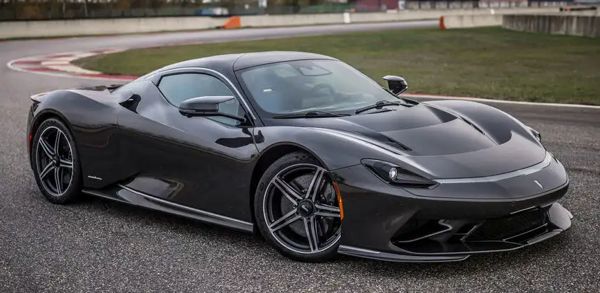
|
|
Pininfarina
is clever (and lucky) to find out Rimac has a car so advanced and
spectacular yet lacking a good look to match...
|
|
Perhaps because
Pininfarina designed so many beautiful cars, most notably for Ferrari,
it is easy to forget that it was originally founded as a coachbuilder.
In fact, its official name was “Carrozzeria Pininfarina”, in which the
Italian word means bodywork. In the good old days, a carrozzeria took
rolling chassis from mass manufacturers like Fiat, Lancia and Alfa
Romeo, put on its own bodywork and created some of the most beautiful
cars in the world. Apart from design, they also involved more and more
in engineering, as the shift from body-on-frame construction to
monocoque called for a complete knowledge in chassis design, NVH
suppression and aerodynamics – Pininfarina was one of the first car
makers to install its own wind tunnel. It also operated a number of
assembly plants in Italy and even Sweden (for producing Volvo C70).
By the early 2000s, design business declined as car makers took design
activities inhouse, so Pininfarina shifted its focus to contract
manufacturing. Unfortunately, when economy depressed, contracts dried
out. Mounting debts almost dragged the firm into bankruptcy. After
years of debt restructuring, it was sold to Indian truck maker Mahindra
& Mahindra in 2015. Paolo Pininfarina, son of Sergio and grandson
of founder Battista “Pinin”, remains chairman of Pininfarina SpA, but
day to day operation is handled by a new CEO. Having closed all
manufacturing plants, its business returned to design and consultancy,
especially for Chinese clients.
But that is not the end of its Carrozzeria story. In 2018, Mahindra
opened a new company in Germany called Automobili Pininfarina for
building luxurious electric cars bearing the Pininfarina name. Though
not managed by Pininfarina, it employed the long-serving chief designer
of Pininfarina, Luca Borgogno, to lead the design, while most of the
engineering work and the production take place at Pininfarina’s
headquarters in Cambiano, Turin. The first product is the Battista
electric hypercar. 150 cars are slated to be built from 2022 at a
sky-high price of 2 million euros (before tax) apiece. Pininfarina
finally becomes a car maker in its own right.
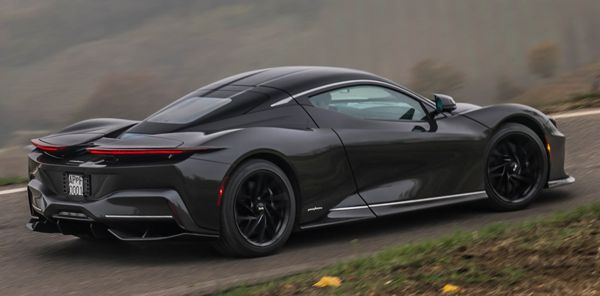
|
|
Sexy
styling has a hint of Ferrari 458, designed also by Pininfarina. |
|
Well, maybe not. The Battista is actually a derivative of Rimac Nevera.
Pininfarina is clever (and lucky) to find out a hypercar so advanced
and so spectacular in performance yet lacking a good look to match. For
sure, Mate Rimac is very good at engineering, so capable in developing
electric powertrains and chassis and even fabricate its own
carbon-fiber parts and design its own infotainment system. But
obviously what the Croatian lacks is a talent in art. By mating the
underpinnings of Nevera with the Italian's sexy bodywork, Pininfarina
is convinced that a dream come true. Rimac is more than happy to
provide the basis and engineering service for realizing the project, as
it is more an engineering consultancy company than a supercar maker, as
long as Pininfarina can pay. Meanwhile, the Italian is good at design
and marketing luxury goods, so it should have no problem to shift all
150 cars even at that price. Think about it: if you have 2 million
euros to spend, which one would you choose? A Croatian car with a name
nobody heard before, or an Italian car bearing a name usually
associated with Ferrari?
The Pininfarina is really beautiful. It is hard to believe that it
shares the Rimac’s carbon-fiber monocoque as well as windscreen and
windows, i.e. elements that restrict the shape of the car. Its sharper
nose and sharp crease lines at the rear fenders help defining a sexy
shape. Its surface and edge treatment are more elegant, showing amazing
quality, especially if you order gloss carbon-fiber bodywork. Its
blade-style taillights look both innovative and classy. But above all,
there is a hint of Ferrari 458 Italia in its side view, thanks in part
to the bodywork that rises from the door and envelop the rear screen.
Luca Borgogno was there when Pininfarina designed the 458, one of the
last Ferraris responsible by Pininfarina.
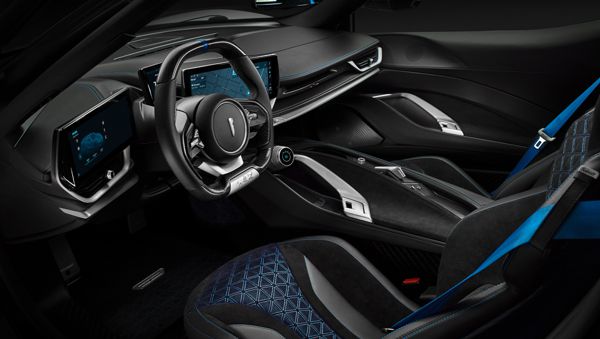
|
|
Battista
is supposed to be more GT than Rimac, which is evident in interior, but
it lacks luggage space. |
|
Although Pininfarina would not tell, I suspect the bodywork may be
built by Rimac’s composite facilities. If quality not good enough,
plenty of Italian suppliers around Modena region will be able to fill
the gap. Anyway, the final assembly taking place at Cambiano might be
limited to fitting a few body panels and trimming the unique interior.
Although as cramped as Rimac to taller drivers, the interior does look
different from its Croatian cousin. The Battista features a small
digital speedometer right above the steering column, flanked by a pair
of touchscreens, one for driving information and battery status,
another for infotainment, navigation and HVAC. The square-off
carbon-fiber steering wheel adds to the perception of piloting a
fighter jet. The cabin has plenty of exposed carbon-fiber, stitched
leather and aluminum, feeling suitably luxury, although Bugatti and
Pagani feel more expensive again.
The Pininfarina is a bit longer, wider and heavier than the Rimac, and
you will certainly be aware of its width when driving on tighter
country roads. However, in terms of straight line performance, little
separate the two. It quotes 1900 horsepower and 1740 pound-foot of
torque from the 4 permanent magnet motors, hit 60, 124 and 186 mph from
rest in merely 1.9, sub-6 and sub-12 seconds, respectively. Top speed
is in excess of 217 mph. Not quite as spectacular as Rimac, but I doubt
if you can tell any differences on the road. Its acceleration is so
strong that you wonder what’s the point of punishing yourself with
vigorous g-force. However, in gentler driving modes, it is pretty easy
to live with. The suspension is comfortable enough for most but the
worst surfaces. The throttle response is gentle, and there is no
gearshift to interrupt the smooth power delivery. The regenerative
braking allows one-pedal driving. The steering is light and accurate,
if not feelsome.
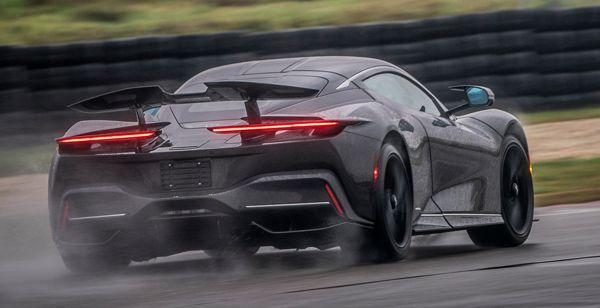
|
|
1900
horsepower is more than its torque vectoring can tame. |
|
Having said that, it is not exactly a “Hyper GT” as claimed by the
firm. The NVH suppression is far from remarkable, as plenty of tire and
suspension noises penetrate into the cabin and stones keep hitting the
carbon-fiber underbody loudly. Like Rimac, the ride doesn’t quite match
the best supercars, let alone the standard of a true grand tourer. The
sound synthesizer exclusive to Pininfarina produces a spaceship kind of
noise, but more gimmicky than entertaining. The luggage space under the
glass liftback is fine for a hypercar, but obviously not up to the job
of a GT. Finally, the 311 miles of claimed range is obviously too
optimistic. Considering Rimac registered only 205 miles under the more
realistic methodology of US EPA, the Battista has no reason to run any
further. A cross-country journey will take multiple recharging. A 10-80
percent charge will take 25 minutes, even if you get a quick DC
charger.
Although it weighs as much as 2.2 tons, the Battista feels much lighter
and pretty agile, just as its Croatian cousin. Roadholding, traction,
body control, steering and braking are all very good. However, when
push it to the limits on a track, it feels less satisfying than the
best sorted Ferrari, McLaren, Lamborghini or Porsche. Its torque
vectoring – theoretically superior to any alternative systems due to
individual motor for each wheel – seem to have problems to tame the
huge power, struggling to achieve a smooth power slide. If you switch
all driving aids off, it will become quite a beast to control, because
a small prod of throttle could trigger spin and slide, ending up on the
gravel. Never try that on a public road, or any tracks less than dry.
This means, even if you can live with its lack of aural excitement and
limited range, you won’t get as much driving thrills as in a
conventional hypercar. Yes, the power and acceleration offered by this
car is incredible, but they get to the extent that you can use only a
tiny fraction before risking your life. Nothing is more painful than
knowing your hypercar capable of far more but not able to exploit its
potential.
|
Verdict:     |
|